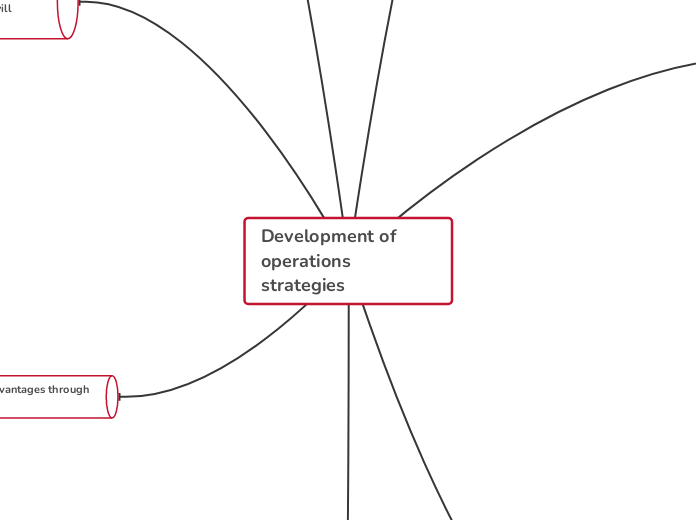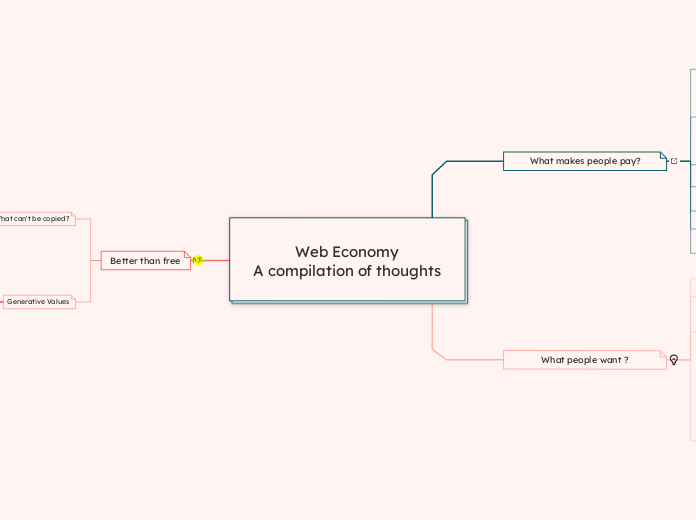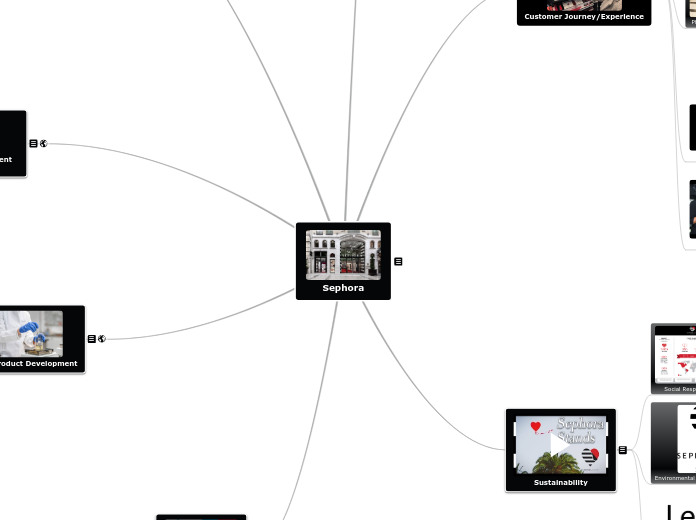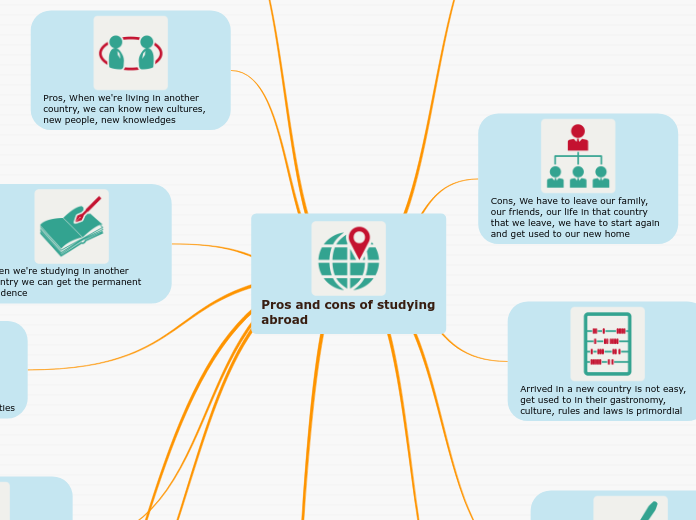Development of operations strategies
AUTOR: JESUS ALEXIS ESPINOZA RAMIREZ
Competitive advantages through operations.
Competence in response
The answer includes the entire set of values related to timely product development and on-time delivery, as well as reliable scheduling and flexible performance.
Cost competition
Low-cost leadership means achieving maximum value as defined by your customer.
Differentiation competencies
The idea of differentiation by experience is to engage the customer.
Differentiation should be conceived as something that goes beyond the physical characteristics and attributes of the service to encompass everything related to the service.
beyond physical characteristics and service attributes to encompass everything about the product or service that influences the value customers derive from it.
product or service that influences the value that customers derive from it.
Differentiation is related to providing uniqueness.
Mission of a company We define an organization's mission as its purpose - that which it will contribute to society.
Conceptual aspects
Responses
Set of values related to fast performance
with fast performance,
flexible and reliable performance.
Cost leadership
It involves achieving maximum value as defined by your customer. It requires examining each of the 10 AO decisions in a sustained effort to lower cost while meeting the customer's value expectations. A low-cost strategy does not imply low value or low quality.
Differentiation
The idea of differentiation by experience is to involve the customer is that people use their five senses so that they are engrossed, and even actively participate, in the product (delivering a unique experience capable of satisfying the customer and not looking for anything else in the market).
Reasons to globalize
Attracting and retaining global talent.
In short, gaining a competitive advantage in this ever-tightening world means maximizing all possible opportunities, from the tangible to the intangible, that international operations can offer.
Learn how to improve operations.
Understanding markets.
Knowledge of these markets not only helps companies understand where the market is going, but also helps them diversify their customer base, add flexibility to production and smooth the business cycle.
Provide better goods and services.
Improve the supply chain.
It is dynamic and can always improve: even if it is satisfactory to use as suppliers where this supply is historically generated:
3. can be objective and measurable
2. Although the characteristics of the goods and services
1. Providing better goods and services
Reduce costs (labor, taxes, duties, etc.).
Outsourcing services of cheaper labor and with less specialized characteristics is a very good practice to reduce costs, and there are treaties such as free trade that offer a good alternative to contract services at lower cost in different countries.
Ten strategic decisions in operations management
Design of goods and services
Service design: the service industry includes, for example, banking, insurance, transportation, communications, etc. The products offered by service companies range from surgical operations to a haircut at a hairdresser's, or a great movie.
Product design considerations
Selection of goods and services: products are born, live and die, and are pushed aside by the changing society.
Maintenance
It is the activity that is responsible for maintaining the quality of the service provided by the machines, and that will always be associated with the generation of value, it could also be said that it is a resource that adds value to the processes.
Programming
An operations research tool designed to allocate limited resources among various activities to be performed. "A schedule is a timetable that indicates when to perform activities, use resources or allocate facilities".
Inventory
It is divided into 4: Raw materials, work in process, maintenance, repair and operation, finished goods. The objective of inventory management is to find a balance between inventory investment and customer service.
Supply chain
It is the management of raw materials and services to transform them into products in process and finished products. "It is the integration of activities that procure materials and services, to transform them into intermediate goods and finished products, and deliver them to the customer."
Human Resources
In management, human resources are referred to as the set of employees of an organization.
Plant layout
Facility layout strategy is the most efficient and effective way to know how a facility can be laid out in such a way that a product is delivered quickly, reducing labor and waste, this also includes machinery, office furniture, etc.
Location
Location strategy is the most efficient way to know where companies can locate. The location decision depends on the type of business.
Process and capacity
Process strategy or transformation strategy is the best way in which goods or services can be produced.
Quality
It is the ability of a good or service to identify and satisfy customer needs.
ASPECTS OF OPERATIONS STRATEGY
First, we look at what the research tells us about effective operations management strategies. Second, we identify some preconditions for the development of an effective OC strategy. Finally, we look at the dynamics of developing an OC strategy.
Dynamics
Strategies change for two reasons. First, strategy is dynamic due to changes within the organization or changes in the environment.
Prerequisites
Before establishing and attempting to implement a strategy, the operations manager must understand that the company operates in an open system in which multiple factors exist. Such as:
The integration of the AO strategy with the strategy of the company and other functional areas.
The resources available within the company and the role of the AO.
The product life cycle, which could establish limitations to the operations strategy.
Current and forecasted environmental, technological, legal and economic aspects.
Competitors' strengths and weaknesses, as well as the potential market entry of new products, substitutes, and the commitment of distributors and suppliers.
Research
The study supports the important role of AO strategy in developing a competitive advantage.
PIMS: Program established in cooperation with GE to identify the characteristics of companies with high ROI.
characteristics of companies with high ROI
Low direct cost per unit (relative to competition).
Low investment intensity (the amount of capital required to produce one dollar of sales).
High operational efficiency (the ratio of expected productivity over actual employee productivity).
High capacity utilization.
High quality products (in relation to the competition).
Strategy alternatives in operations
Estrategia multidoméstica
Strategy in which operational decisions are decentralized to each country to increase local responsiveness. Maximizes a competitive response to the local market.
International strategy
An international strategy uses exports and licenses to penetrate the global arena. A strategy in which global markets are penetrated through exports and licensing.
Transnational strategy
A transnational strategy fully exploits economies of scale and learning, as well as the pressure for responsiveness, by recognizing that core competence resides not only in the base country, but can exist anywhere in the organization. The term transnational describes a condition in which materials, people and ideas cross - or transcend - national boundaries.
Global strategy
A global strategy has a high degree of centralization, with head offices coordinating the organization to achieve standardization and learning between plants, and this generates economies of scale.









